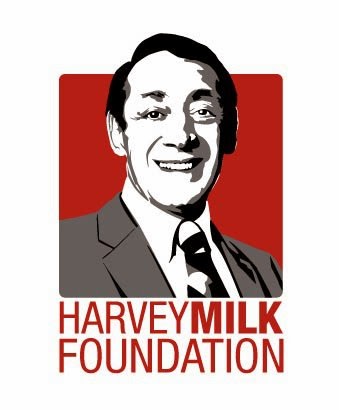Mark Twain is well-known for his ability to tell a story in a way where you are actually there with the characters; examples of this talent are in The Adventures of Huckleberry Finn and The Adventures of Tom Sawyer. Not only was he was an accomplished and respected writer, he was also a popular humorist, satirist and lecturer.
Twain had a refreshingly honest view of how the world works, and is known for his many – and often funny – quotes. Here are a few which could lead you to a kick-ass life:
1. “A man cannot be comfortable without his own approval.”
When did it become commonplace to only care about what other people think of us? I mean, of course we want to be liked and accepted as part of a larger group, but many people (myself included) have dictated what to do and what to say based on how well we think it would be received by others. We hesitate, hem and haw, bite our tongues, swallow our thoughts just because we don't want to piss people off. As a result, we suffer because we're not being true to ourselves.
What we think about ourselves directly impacts our behaviors and performance. (The graphic illustrates this.) Makes sense, doesn't it?
It's time to follow our hearts and desires and do what's right for us. Not everyone will be thrilled with our decisions, but they are ours. Right, wrong or indifferent, ours. We are the ones living in our sneakers, and the judgments of others should mean little. Fear that we will lose relationships as a result of being who we really are and acting accordingly means that those relationships are no longer worth keeping.
Whitney Houston said it best: "Learning to love yourself is the greatest love of all."
2. “Humor is mankind’s greatest blessing.”
When we keep our heads down, blinders on, nose to the grindstone, needing to produce produce produce, we miss out on a lot of things. Worthwhile interactions. Important conversations. Precious moments. Funny stuff. We prevent ourselves from seeing the humor in most things.
Do you know what I mean by the expression "having a good laugh?" When you are feeling uninhibited, free to laugh until you snort, and bent over because your stomach hurts? Finding humor in the absurdities of life and not at the expense of others? There's not much that feels better after laughing like that...probably because when we laugh, the brain releases endorphins--the "feel-good" hormone--and we enjoy many other health benefits as well.
Let's find the humor...actually seek out and wrap our arms around it. Chuckle to yourself when you find you've worn two different color socks. Laugh out loud when you're watching a movie or TV show [side-note: my husband is an expert in this, and it's a joy to witness]. Snicker at your old high school senior picture ("Geez...did I really wear that???")
So, as Twain suggest, bless yourself and others and embrace the humor in everyday life.
3. “Anger is an acid that can do more harm to the vessel in which it is stored than to anything on which it is poured.”
Anger is a normal emotion with a wide range of intensity,
from mild irritation and frustration to rage. It's a reaction to a
perceived threat to ourselves, our loved ones, our property, our
self-image, or some part of our identity. Anger is a warning bell that
tells us that something is wrong.
Anger has three components:
- Physical
reactions, usually starting with a rush of adrenaline and responses
such as an increased heart rate, blood pressure, and tightening muscles;
often known as the “fight or flight” response
- The
cognitive experience of anger, or how we perceive and think about what
is making us angry. For example, we might think something that happened
to us is wrong, unfair, and undeserved.
- Behavior,
or the way we express our anger. There is a wide range of behavior that
signals anger. We may look and sound angry, turn red, raise our voices,
clam up, slam doors, storm away, or otherwise signal to others that we
are angry. We may also state that we are angry and why, ask for a
time-out, request an apology, or ask for something to change.
Everyone
experiences anger, and it can be healthy. It can motivate us to stand
up for ourselves and correct injustices. When we manage anger well, it
prompts us to make positive changes in our lives and situations.
Mismanaged
anger, on the other hand, is counterproductive and can be unhealthy.
When anger is too intense, out of control, misdirected, and overly
aggressive, it can lead to poor decision making and problem solving,
create problems with relationships and at work, and can even affect your
health.
4. “Don’t go around saying the world owes you a living. The world owes you nothing. It was here first.”
At the risk of sounding like my mother, I have noticed that, in the last ten years or so, many people feel a sense of entitlement. A "you-will-serve-me-now-because-my-tuition-pays-your-salary" attitude. The "it's-my-money-and-I-want-it now" mentality. You get my drift.
Perhaps it's fallout from a world where technology makes everything happen instantly...self-serve gas pumps...your bank balance at the push of a button. Perhaps it's a result from not being taught civil behaviors. Perhaps it's because no one is expected to wait...the 10-items-or-less lane...no delayed gratification. Perhaps it's because folks just don't want to put the work in to get the huge reward they seek.
Regardless of its genesis, there is no room for entitlement in our society. If we look back to our ancestors who came here from elsewhere, we'll see that everyone had to work for what they had. What they were able to accomplish and attain was a source of great pride because they made it happen with their own two hands.
There's something to be gained from making something happen yourself: your education, creating a piece of furniture, buying a car. Taking charge, making the decision yourself, putting the time in, doing honest work and then enjoying the results is worth a helluva lot more than having it handed to you, or worse, demanding that someone else do it for you. Think about it...don't you take better care of the things you paid for yourself as compared to things that are given to you?
So, that said, my pearls of (ahem) wisdom are this:
a. When you go to someone for help, be gracious and polite...they will bend over backwards to solve your problem.
b. Learn to wait for it. Whatever "it" is. It will be worth it.
c. Roll up your sleeves, get your hands dirty and put your back into it. This is your life. Create it yourself. Take pride in what you accomplish and the rewards for your persistence, diligence and never-give-up attitude will get you everything you need...all in good time.
d. The world doesn't owe you a damn thing. Instead, you owe the world everything...it provides all you need to sustain yourself. You best take care of it.
Sources: Anger Research Consortium; American Psychological Association
(c) Copyright 2014 Robyn M. King. All Rights Reserved.








































